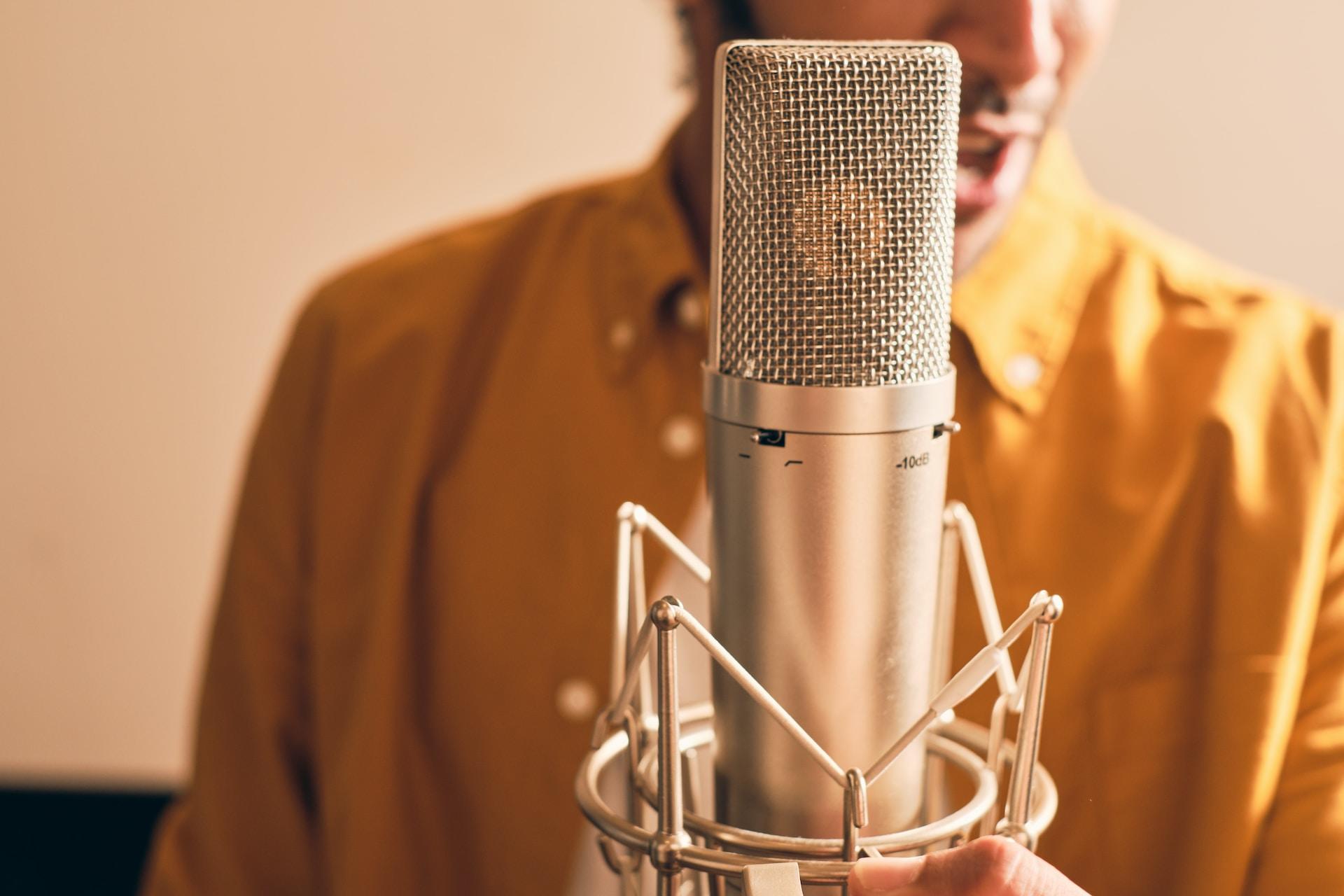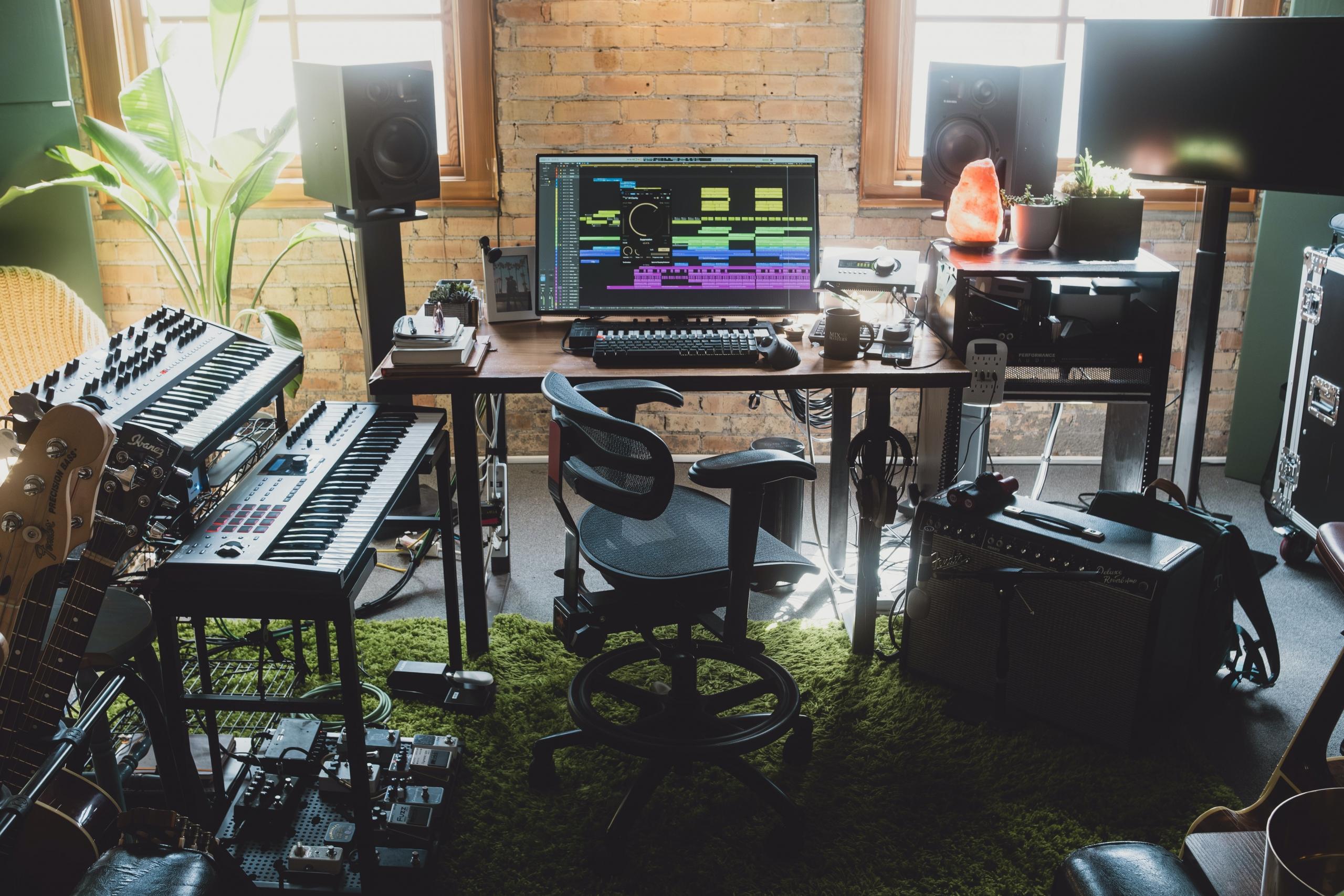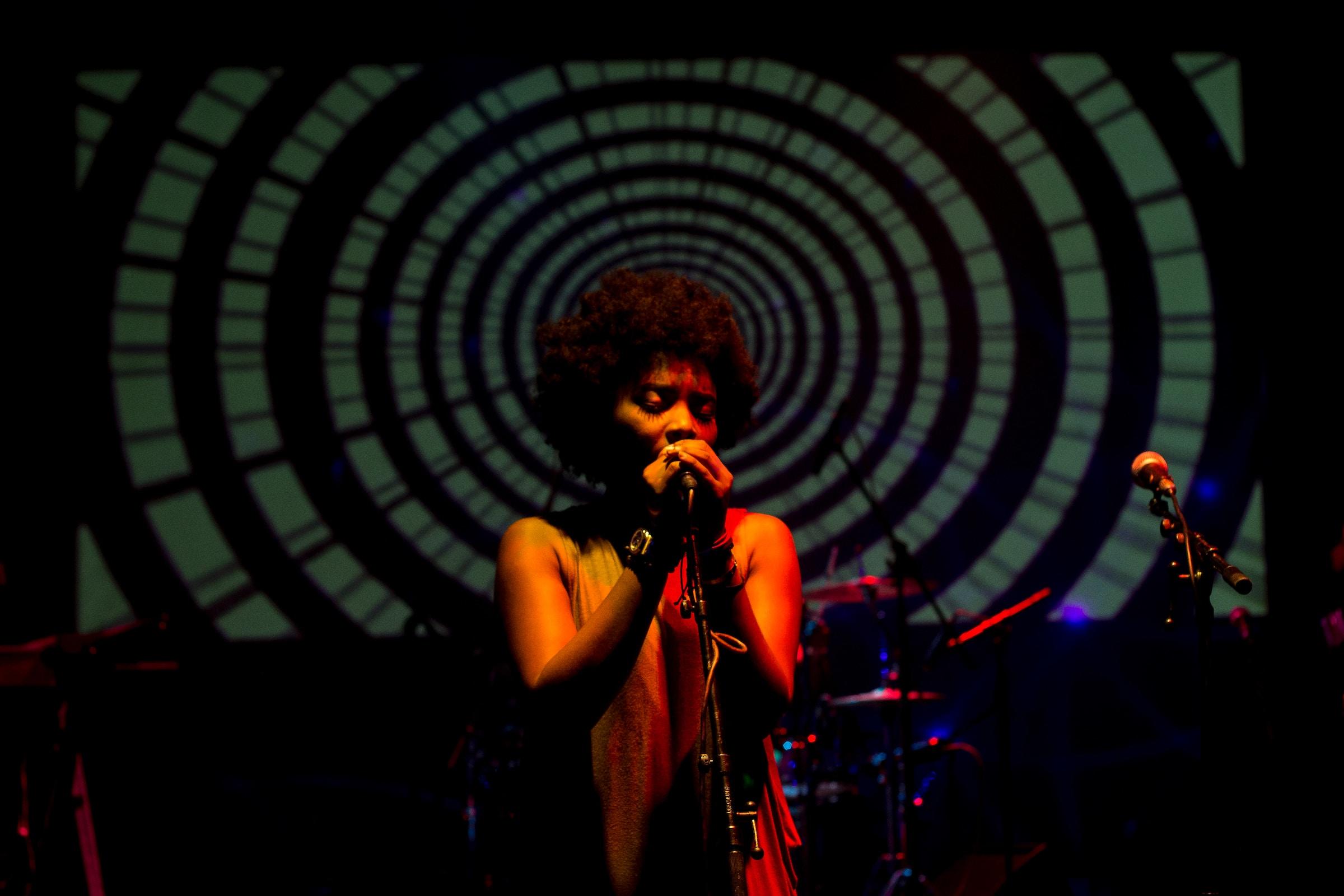"The only thing better than singing is more singing."
- Ella Fitzgerald
Buckle up and get ready to dive into a comprehensive exploration of the multifaceted world of vocal expression. Let's journey into the intricate world of vocal artistry with a comprehensive exploration of critical facets.
First things first! - Taking good care of your voice is priority number one: vocal health and care will keep it clear and strong for a long time.
Want to sing with emotion? Musicality and style are key elements to unlocking the full potential of vocal expression, while performance skills and presence are fundamental for captivating your audience.
Let us also navigate the vast landscape of home studio recording technology. Do you know you can produce an entire song from your bedroom today? Learn the basics of recording software, get familiar with audio interfaces, and you'll be on your way to creating studio-quality magic at home.
Are you seeking tips and the secret recipe for unleashing your voice's potential? Let's navigate this guide through the essence of voice, blending science, artistry, and technology for a holistic understanding of vocal mastery!


THE ANATOMY OF THE VOICE
The human voice is a remarkable instrument, a complex interplay of various anatomical structures that combine to produce the rich tapestry of sounds that make up speech and singing. From the gentle whisper to the soaring crescendo, its capabilities are vast, relying on an intricate interplay of various components within the body. This is why understanding the throat anatomy of the voice is essential for vocalists!
The Larynx and Vocal Cords
What is the larynx? At the heart of this intricate system lie the vocal cords, two pairs of elastic bands positioned within the larynx (or the human voice box). Picture them as these little rubber bands in your throat. The space between them is called the glottis. When you breathe out, they vibrate, creating sound. Their tension and thickness determine the high pitch, the low pitch, and the quality of your voice.
The manipulation of these cords is critical in altering the resonance and timbre of one's voice. In front of the larynx, you will find a bump that people refer to as Adam's apple. Have you ever asked yourself if women have Adam's apple? The answer is yes!
The trachea and the bronchi are connected to the larynx anatomy, forming the respiratory system. The diaphragm, a dome-shaped muscle at the base of the lungs, plays a crucial role in controlling airflow during speech or singing (more on later).
Resonators
The human voice resonates within a series of cavities. The pharynx, mouth, nasal passages, and chest act as amplifiers and modifiers, shaping the sound produced by the vocal cords. They amplify and tweak the sounds coming from your vocal cords.

Each individual's unique vocal resonance contributes to the distinctiveness of their voice, affected by factors such as the size, shape, and flexibility of these resonating spaces. Ever notice how someone's voice sounds slightly different if they're talking through their nose? Yep, that's the resonators at work.
Breath Support
Breath is the engine behind the voice. The diaphragm, a large muscle separating the chest and abdomen, plays a pivotal role. Engaging creates a controlled flow of air necessary for sustained speech or singing. Mastering breath support enables projection, stamina, and control over the voice's volume and dynamics. Breath support is fundamental for singers!
Articulators
Beyond the physiological aspects, the voice is also influenced by factors such as articulation and intonation. Articulation involves the precise movements of the tongue, lips, and other articulators to shape speech sounds. Intonation, on the other hand, refers to the rise and fall of pitch in speech, contributing to communication's expressive and emotional aspects.
Muscles and Control
A myriad of muscles surround the larynx, influencing its position and tension: the posterior cricothyroid, an abduction muscle, opens the glottis by pulling the arytenoid cartilage. The control and coordination of these muscles are fundamental in adjusting pitch, volume, and intonation. Vocal training often involves exercises to strengthen and enhance the control of these muscles for optimal vocal performance; training these muscles is your vocal workout, making your voice as flexible and powerful as possible.
Emotion and Expression
Beyond its physical aspects, the voice is a conduit for emotion and expression. Its ability to convey subtle feelings through tone, inflexion, and cadence is unparalleled. In short, the voice is a versatile, powerful force. As a musical instrument, the voice can captivate, comfort, inspire, or evoke profound emotions in others.
Your vocal cords are blown apart and then sucked back together, producing a vibration
that repeats hundreds and sometimes thousand times per second.
VOCAL HEALTH
Vocal health encompasses a spectrum of factors, ranging from physical well-being to psychological balance. The vocal cords are the epicenter of a singer's craft. Like any muscle, they require proper care and attention to function optimally. This is fundamental for extraordinary singing.
Beyond the physicality of it, emotional and mental well-being also play pivotal roles in maintaining vocal health. Stress, anxiety, and lack of sleep, for example, can manifest physically and affect the quality of a singer's voice.
Hydration and Nutrition
A fundamental rule of vocal care is adequate hydration. The lubrication of vocal cords through consistent water intake is essential for minimising friction and strain during vocalisation. Singers should habitually consume sufficient water throughout the day, especially before and after performances. Have you ever wondered how to improve your singing voice? The answer is hydration and nutrition!
Essential vitamins A, C, and zinc contribute to vocal cord health. Fruits, vegetables, and lean proteins should become the building blocks of a singer's nutritional regimen.

Have you ever wondered how to improve your singing voice? The answer is Hydration and nutrition!
Essential vitamins A, C, and zinc contribute to vocal cord health. Fruits, vegetables, and lean proteins should become the building blocks of a singer's nutritional regimen.
Elevate your singing with a zesty dose of vocal health and stay hydrated to ensure your larynx and vocal cords are primed for pitch-perfect performances!
Warm-Up and Cool-Down Routines
Athletes stretch and warm up before a game to prevent injury. Similarly, singers must prepare their vocal cords for the performance ahead. Vocal warm-ups are vital, gently awakening the muscles and ensuring flexibility. These exercises prevent strain and enhance the singer's control and range. Equally important is the cool-down, a post-performance or practice singing routine that helps the vocal cords recover. Gentle humming, lip trills, and relaxed sighs can be instrumental in easing any tension built up during a performance.
Technique
Learning to sing correctly and understanding breath control, pitch modulation, and resonance are not just skills but safeguards against strain and injury. Proper singing techniques aren't about imposing limitations but instead unlocking the full potential of the voice while safeguarding its longevity.
Breath control is the engine that drives the voice. Singers learn to manage breath support, allowing sustained and controlled notes without undue strain. Learning to harness the diaphragm and control airflow optimally can make the difference between a soaring performance and vocal fatigue.
Vocal Rest and the Dangers of Strain and Overuse
Why do we lose our voice? In pursuing perfection, singers may push their voices beyond healthy limits. Strain and overuse can lead to vocal fatigue, nodules, and permanent damage. Recognizing the signs of vocal strain is crucial. Therefore, singers must recognize the signs of vocal exhaustion and prioritize rest and recovery. Giving the vocal cords time to recuperate is as crucial as practicing. Adequate sleep, vocal rest days, and mindful self-care contribute significantly to maintaining vocal health over the long term.
Psychological Well-Being
As mentioned, emotional and mental states directly influence the voice's physical health. Stress and anxiety can manifest physically, causing tension in the body, including the throat and vocal cords. This is why singers often find that emotional well-being, whether through mindfulness, meditation, or counseling, contributes significantly to vocal health.
Adele underwent vocal node surgery in 2011.
She has publicly announced that she can no longer eat pizza "because it's got cooked tomatoes on it, which are bad for your throat and give you acid reflux."
Vocal health is fundamental for a singer's artistry, musicianship and proper care of their instrument. It requires an informed and comprehensive approach, where physical care, proper technique, and commitment to psychological well-being converge.

MUSICALITY AND STYLE
Musicality and style are integral components that define a singer's artistry, contributing significantly to their ability to captivate audiences. In other words, singing is more than hitting the right notes; it's about conveying emotions, connecting with the audience, and crafting a unique sonic signature.
Understanding and incorporating musicality and style into performances can elevate a singer from good to exceptional.
Musicality
Musicality is the ability to connect with music's emotional and expressive elements. A well-rounded musicality enhances a singer's expressiveness and fosters a stronger connection with the audience.
At its core, musicality is the art of interpreting music. It encompasses rhythm, phrasing, dynamics, and the ability to internalise and interpret a piece's essence.
- Pitch and Tone: While hitting the right notes is crucial, infusing them with emotion is equally important. A note sung with feeling resonates far more deeply than a perfectly pitched but soulless rendition.
- Dynamics: Experiment with dynamics to add depth to your performance. Know when to sing softly and when to belt out powerful notes. Additionally, pay attention to phrasing—break down lyrics into meaningful phrases and deliver them with appropriate pauses and emphasis.
- Rhythm and timing: Understanding rhythm patterns and syncopation is vital. It's not just about staying on the beat; it's about playing with timing, adding subtle pauses, and emphasising specific phrases to create a captivating performance.
- Phrasing: Knowing when to breathe, where to place emphasis, and how to shape phrases gives a song its unique character. This skill allows singers to add their personal touch to a piece, making it their own.
Style
Style is the unique fingerprint that distinguishes one singer from another. However, a versatile singer can adapt their style to fit various genres and musical contexts. This adaptability broadens the singer's repertoire and audience appeal. Exploring different styles, from classical to pop, jazz to rock, allows singers to discover new facets of their voice and adds depth to their musicality.
- Exploring genres: Experimenting with various musical genres helps singers discover what resonates with them. It allows for a broader understanding of music, enabling the fusion of different elements into a unique style.
- Technique: A solid technical base provides the freedom to explore diverse musical styles without compromising vocal health. It allows singers to express themselves more effectively and navigate the intricacies of different genres.
- Studying different influences: Learning from musical icons and diverse artists enriches one's style. Observing how different singers interpret songs or use vocal techniques can inspire new approaches and expand artistic horizons.
- Authenticity: While exploring different styles, it's crucial to maintain authenticity. Your unique voice and interpretation of music are your strengths. Embrace your individuality, and let it shine through in your performances. Authenticity creates a genuine connection with your audience.
Understanding and incorporating these elements is crucial for singers who want to unlock the full potential of their artistry and create performances that leave a lasting impression on audiences worldwide.
SINGERS BY GENRE
Jazz
- Nina Simone
- Frank Sinatra
- Paul Anka
- Ella Fitzgerald
Rock
- Freddie Mercury
- David Bowie
- Robert Plant
- Elton John
Pop
- Michael Jackson
- Whitney Houston
- Amy Winehouse
- Beyonce
PERFORMANCE SKILLS AND PRESENCE
Have you considered that performing is a magical process refined through repetition until natural improvement occurs? Is the ability to connect with an audience an innate quality beyond active cultivation? In reality, numerous tools and techniques exist to improve your performance skills and to craft a captivating live performance.

Firstly, what defines an outstanding performance? Reflect on your top three attended concerts. Typically, great performances are etched in memory for the emotions they evoke. Whether the exhilaration of Coldplay's fireworks or the impact of a music festival's sound system, it is the feelings these elements generate. While stage resources matter, establishing a profound connection with the audience is achievable with whatever resources you possess.
Be Fully Yourself on Stage 😎
As a performer, you create the atmosphere, setting the tone for the audience. To evoke emotions, being present and vulnerable, dropping your guard, dancing if the music moves you, and expressing genuine emotions allow the audience to connect with the authentic you.
Read the Room 📖
Connect with the room's energies; identify audience needs and focus on individual connections to create a collective vibe. Make eye contact, ask questions, and share stories as if you were talking with friends. Remember, performing is a two-way dialogue, requiring active participation from both sides.
Use Your Strengths 💪
Do you have a theater background? Do you speak languages? Were you a middle school teacher? Everything you have done has given you performance skills you can use on stage. Remember that you are not being something that you aren't. Your background can be a powerful tool to captivate your audience if you use it creatively.
Decorate Your Stage ✨
Build the mood with the look of your stage. Make the stage look like your stage, not any other artist's. You can decorate your mic, light candles, set up some Christmas lights… Have something that says something about the kind of music that you play.
Build the Mood 😲
Prepare your audience. Build excitement before the show starts. Pay attention to the flyer, does it make you want to go to the concert? Whether it is printed or digital, this is the face of your show.
And what about the nerves?
Nervousness plays a significant role in any performing art. Some musicians claim it never truly disappears. Nevertheless, being thoroughly prepared can help you view those nerves as a driving force that adds energy to your performance. Here are some tips:
Have an agenda 🤓
Prepare every part of the show. Besides rehearsing the songs, plan also the pauses between them. Prepare a setlist with everything that you are going to say. It is easier to allow the flow and to improvise if you have a ground where you can stand.
Mind what you drink and eat 🫙
Does coffee make you feel accelerated? Or does it give you reflux? Try to avoid the foods that make you feel uncomfortable. Stay sober and present in your own body to bring the best out of your performance skills.
Try all your equipment ⚙️
Please list all the things you need and how you will get it. Know what you need and what you have and try to rehearse with that. Make sure that you can try it out before the show.
But most importantly, you learn to live with your nerves; they are also part of the performance and can give you that extra energy for your concert.
HOME STUDIO TECHNOLOGY AVAILABLE TODAY
The gear for music you need to make your home studio may vary depending on your style of music or the instruments you play. You may need different recording devices or studio equipment for other musicians. But here are some general guidelines for different budgets and levels of expertise!

First, you need four things to record your music: a microphone, an interface, a computer and software. The microphone will capture the sound; the hardware interface will translate that sound into data your computer can read. This data will then be saved into software on your computer. This software is called DAW.
What is a DAW
A DAW is the software where you will save and edit all the sounds you record. The equivalent in photography would be an editing program such as Photoshop or Lightroom. DAW stands for Digital Audio Workstation (DAW). Despite their standard functionalities, DAWs vary in strengths, prices, and user difficulty.
Here are the top 5 options:
| Microfone | Features |
|---|---|
| IK Multimedia iRig Stream Mic Pro | You can get this microphone for a reasonable price, and It serves for vocals, instruments and podcasts. |
| Neumann U87 Ai | A bit more high-end. It has excellent vocal accuracy and a switchable polar pattern for recording techniques and singing styles. |
| Rode NT1 | One of the most popular microphones for home studios. It has good sound on a low budget, with detailed vocals. You can also record other instruments, such as piano, guitar or percussion. |
| Audio-Technica AT2020 | This microphone is best for vocals and acoustic instruments. It is a popular alternative for home studios. |
| AKG C414 | This microphone has many tonal options for those willing to invest. It serves both vocal and acoustic instruments. It has a good sensitivity. |
| Shure SM57 | A low-cost recording microphone, available to fit well with any acoustic environment, can play various recording instruments, drums, versatile guitar amps, and vocals. |
All DAWs have the same primary futures; choosing the right DAW will depend on the specific needs of your music project, your budget and the time you want to dedicate to learning its functionalities.
MIDI stands for Musical Instrument Digital Interface: it allows you to create music using machines directly to your computer
What About the Interface and Mics
An audio interface is a fundamental piece of studio equipment. As we mentioned before, this hardware serves as a bridge between your audio equipment and your computer. It converts the audio signals into a format readable by your computer and software.
Some of the market's most popular interfaces for beginner studios are:
- Motu M2: The Motu M2 is an excellent choice for a budget-friendly home studio. With a versatile and user-friendly interface featuring two combo inputs on the front panel, it provides high-quality performance.
- Focusrite Scarlett Solo: This popular interface has a high-quality microphone preamp, low latency, and is budget-friendly. However, the Focusrite Scarlett Solo is limited to only one input.
- Behringer U-phoria UMC202HD: Compact and affordable. It is compatible with various recording software on both Windows and Mac platforms. Like the Motu M2, the Behringer U-phoria UMC202HD has two inputs, so it may not be suitable for users requiring more.
- Steinberg UR22 MKII: The UR22 MKII stands out with MIDI I/O ports, enhancing usability for MIDI controllers and external hardware. Its compatibility with Windows, macOS, and iOS adds flexibility, catering to various operating systems and mobile devices.
In terms of recording microphones, the market also offers a broad spectrum of options catering to diverse budgetary needs, from the most economical to the high-end. Here are some of the most popular:
| Microfone | Features |
|---|---|
| IK Multimedia iRig Stream Mic Pro | You can get this microphone for a reasonable price, and It serves for vocals, instruments and podcasts. |
| Neumann U87 Ai | A bit more high-end. It has excellent vocal accuracy and a switchable polar pattern for recording techniques and singing styles. |
| Rode NT1 | One of the most popular microphones for home studios. It has good sound on a low budget, with detailed vocals. You can also record other instruments, such as piano, guitar or percussion. |
| Audio-Technica AT2020 | This microphone is best for vocals and acoustic instruments. It is a popular alternative for home studios. |
| AKG C414 | This microphone has many tonal options for those willing to invest. It serves both vocal and acoustic instruments. It has a good sensitivity. |
| Shure SM57 | A low-cost recording microphone, available to fit well with any acoustic environment, can play various recording instruments, drums, versatile guitar amps, and vocals. |
In-depth look into types of performing microphones
One of the most important things when choosing a performing microphone is that you feel comfortable with it. You have to like the sound of your voice. If you feel that you sound good, you will sing more confidently and sound better. You have to be able to hear your voice.
There are two main microphone types on the market: dynamic and condenser.
These differ significantly in their design and performance characteristics; Dynamic mics are rugged and ideal for live stages. Condensers offer sensitivity for nuanced details but may be more fragile. For live performances, dynamic mics are preferred for durability, while condensers suit controlled studio settings.
Here are some of the most famous performing microphones on the market:
- Shure SM58: The Shure SM58, priced at around 110 euros, is a durable, dynamic stage microphone favoured for live performances. Its reliability and versatility in professional audio make it a widespread choice.
- Shure SM58 Beta: The Shure SM58 Beta, priced at 180 euros, is a favoured and reasonably priced microphone for live performances, especially with bands.
- Neumann KMS 105: Priced at 600 euros, the Neumann KMS 105 is renowned for high-end studio quality, excelling in acoustic settings and small gigs. Its lightweight design and sensitivity make it ideal for capturing subtle nuances during performances.
- Shure Beta 87A: Priced at 300 euros, the Shure Beta 87A is a crystal-clear condenser microphone with superior feedback rejection. It is ideal for looping and effects and versatile for various performance scenarios.
- Beyerdynamic M88tg: At 400 euros, the Beyerdynamic M88tg is preferred by artists like Phil Collins for its suitability with brighter voices. Renowned for its natural and colourful sound, it captures nuanced lows, appealing to performers seeking expressive audio experiences.
- Audix OM5: Priced at 150 euros, the Audix OM5 provides accurate sound and feedback rejection, making it ideal for performances on loud stages. It enhances natural response, contributing to a high-quality audio experience.
In 2022, the market exceeded the 2 billion mark, and it is expected to reach the 3 billion mark by 2023.
Singers often recommend trying various stage microphones to find one that suits your comfort between all the ??different microphones. If owning a microphone isn't feasible, testing the designated stage mic ensures it's configured with the correct settings, enhancing overall performance. Exploring options is critical for a personalized and optimized vocal experience.

Seek mic advice from your vocal coach, often experienced on stage, guiding you to choose the perfect one. Superprof offers tutors with diverse backgrounds; sign up for lessons or get specific tips. Whether refining technique, perfecting performance, or setting up a home studio, a tutor can guide you at your pace based on your needs.
In conclusion, mastering singing blends passion, practice, and guidance, emphasizing proper techniques and seeking expert advice. Celebrate your unique voice, committing to continuous growth for a fulfilling singing experience.
Your Singing tutor is waiting for you on Superprof!
Want to give it a try?
Let our experts impress you!


















